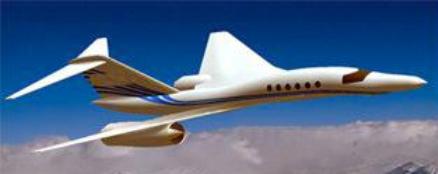The US Federal Aviation Administration will hold a public meeting on 1 March in Palm Springs, California, to discuss the latest and greatest in technologies aimed at making overland supersonic flight in the US a reality.
The gathering, the second in what the agency says will be a series of the events, was launched to “raise public awareness of the continuing technological advances in supersonic aircraft technology aimed at reducing the intensity of sonic boom,” says the FAA in an announcement published in the Federal Register today.
Supersonic flight over land by civil aircraft has been prohibited by regulation since 1973, in part because the sharp “thunk-thunk” of the N-shaped pressure waves that propagate in a cone from supersonic aircraft and strike the ground along the flight path. Oceanic supersonic flight is permitted.
The FAA began to rethink the rule in 2003 however after some groundbreaking work on shaped sonic boom signatures, originally started by DARPA.
“The business jet community was interested, given that innovation, to move forward to explore whether it was sufficiently better to possibly repeal the ban on supersonic flight over land,” says Carl Burleson, director of Environment and Energy for the FAA.
Below is an artist's conception of what a Gulfstream supersonic business jet (SSBJ) might look like.

In addition to Gulfstream’s later work with NASA, showing that a spike extending from the nose of an aircraft can soften a sonic boom, the FAA also worked with NASA to begin defining metrics for how people perceive sonic booms, both outdoors and indoors. That work is continuing.
A similar presentation in Chicago on 24 October last year brought out the likes of potential supersonic business jet developers, Gulfstream and Aerion, as well as passenger plane maker Boeing.
Burleson says the 1 March meeting will include NASA and FAA officials as well as potential SSBJ builders Gulfstream, Aerion, Supersonic Aerospace International and Lockheed Martin.
Source: FlightGlobal.com



















